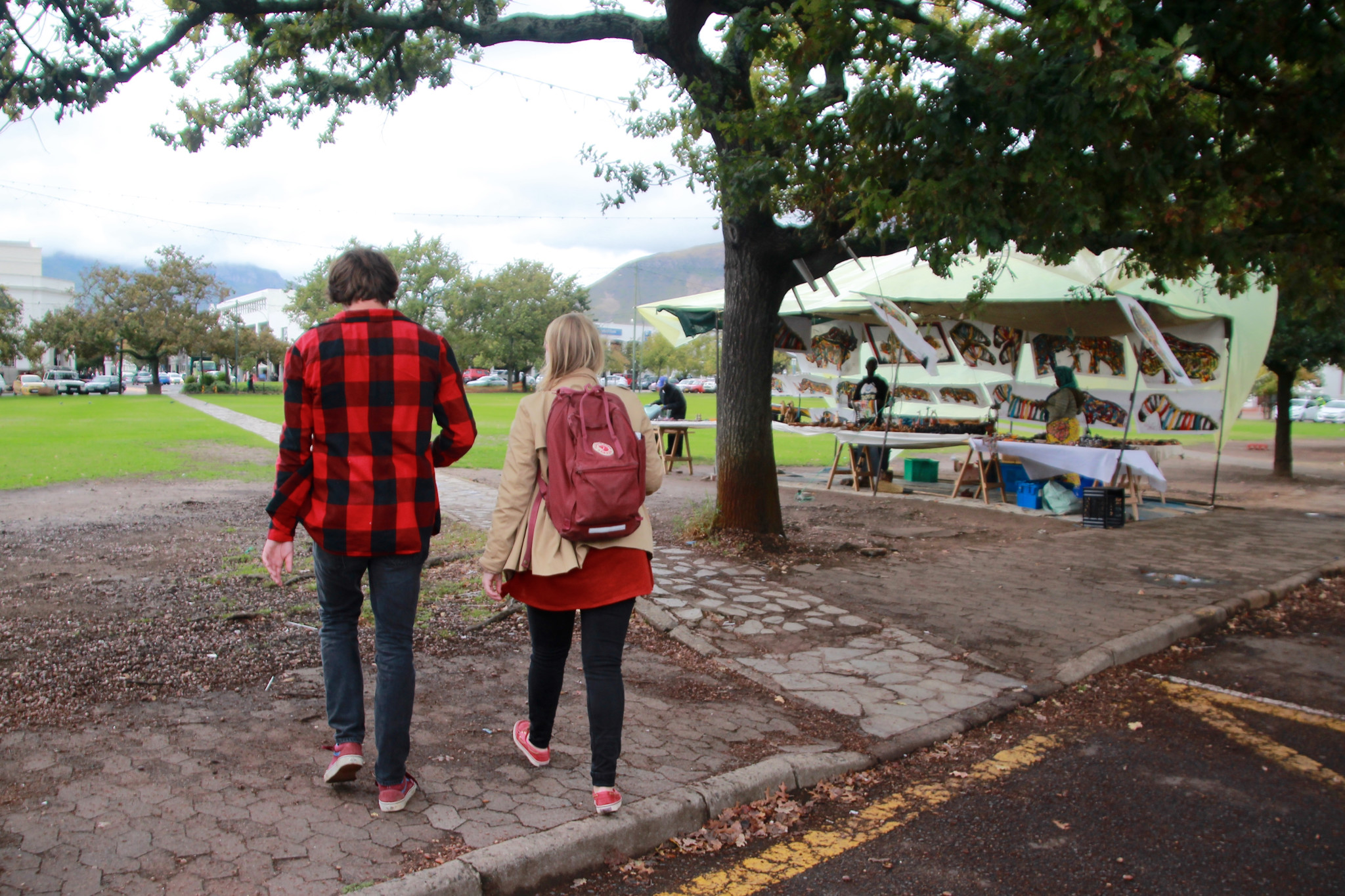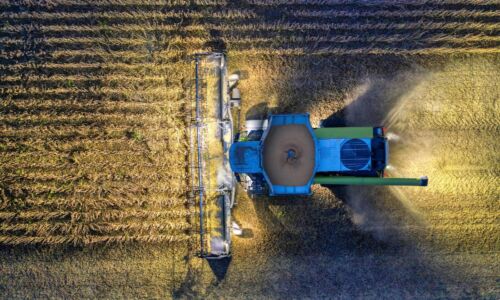Studying in a former white stronghold
-
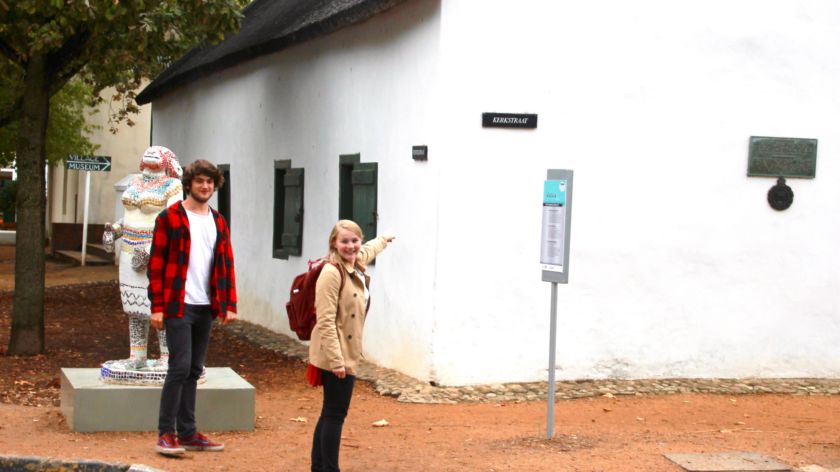 René en Tjits in the Kerkstraat in Stellenbosch. Photos: Miriam Mannak
René en Tjits in the Kerkstraat in Stellenbosch. Photos: Miriam Mannak
Tjits van Lent and René van Son are doing a six-month study abroad period in Stellenbosch: a town that at first glance looks a bit like an old Dutch village. But it is also a place where students protest against racism, rape, and exclusion. What is it like to study there? Vox editor Mathijs Noij visited them.
November 2015: on the Stellenbosch University campus, students place old car tires under the stately statue of Jan Marais. Then, they torch these. The billowing black smoke can be seen for miles. The protesters demand that the university officially employ their uneducated staff, such as the groundskeepers and janitors. Increasingly, these individuals are hired through external companies, without proper terms of employment.
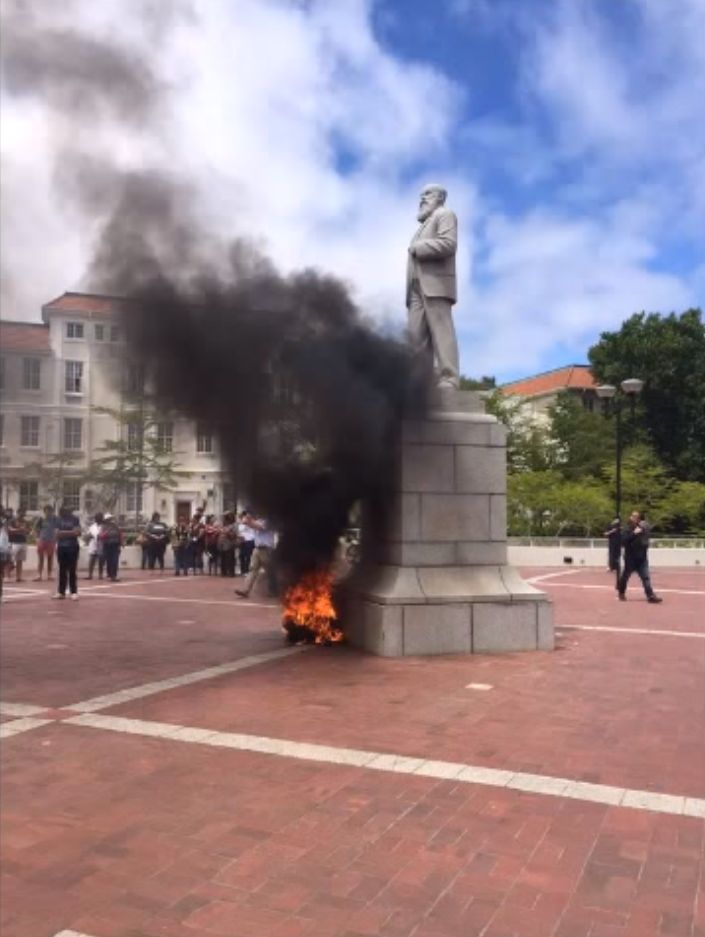
Marais (1851–1915) was a white businessman who made his fortune in mining. He donated a substantial portion of his wealth to the university, where, as a token of gratitude, they erected a statue in his honour. He is affectionately known as “our benefactor”. However, the activists see Marais very differently. They prefer to describe him as a man who enriched himself on the backs of African workers, people who worked for him in appalling conditions.
Hours later, after the fire has been put out, some students are trying to scrub the statue clean again, as you can see in the YouTube clip. While they’re doing this, other students are trying to defile it some more, a reflection of the schism at the university: one group view Marais as a philanthropist while the other considers him an exploiter and imperialist.
“Talk to ten different people on campus and you will get ten different opinions”, says philosophy student René van Son. “In November, people threw rocks through the windows of the administration office. The campus shopping centre was closed when protesters tried to start a blaze.” The following day, riot police filled the campus. The building where psychology student Tjits van Lent had class was in lockdown.
“You sure won’t see me walking the streets alone here at night”
Sexual violence
Tjits van Lent and René van Son normally study in Nijmegen, but are currently studying abroad in Stellenbosch for six months. Tjits completed her Bachelor’s in Psychology in Nijmegen and is taking a few extra courses, while René is doing his Bachelor’s in Philosophy. On the Jan Marais Square in the middle of campus, they point to the soot stains that serve as a dark reminder of last November’s protests.
Tjits and René explain that things have been a little more peaceful on campus lately. But it’s seldom totally quiet in Stellenbosch. The most recent wave of protests was aimed primarily at incidents of sexual violence that took place right near the campus. “Three girls were raped in the past three months”, says Tjits. “In the green zone no less. That’s the area the university claims is safe.” Many walls contain posters or graffiti tags with the motto “End Rape Culture”. Tjits: “No, you sure won’t see me walking the streets alone here at night.”
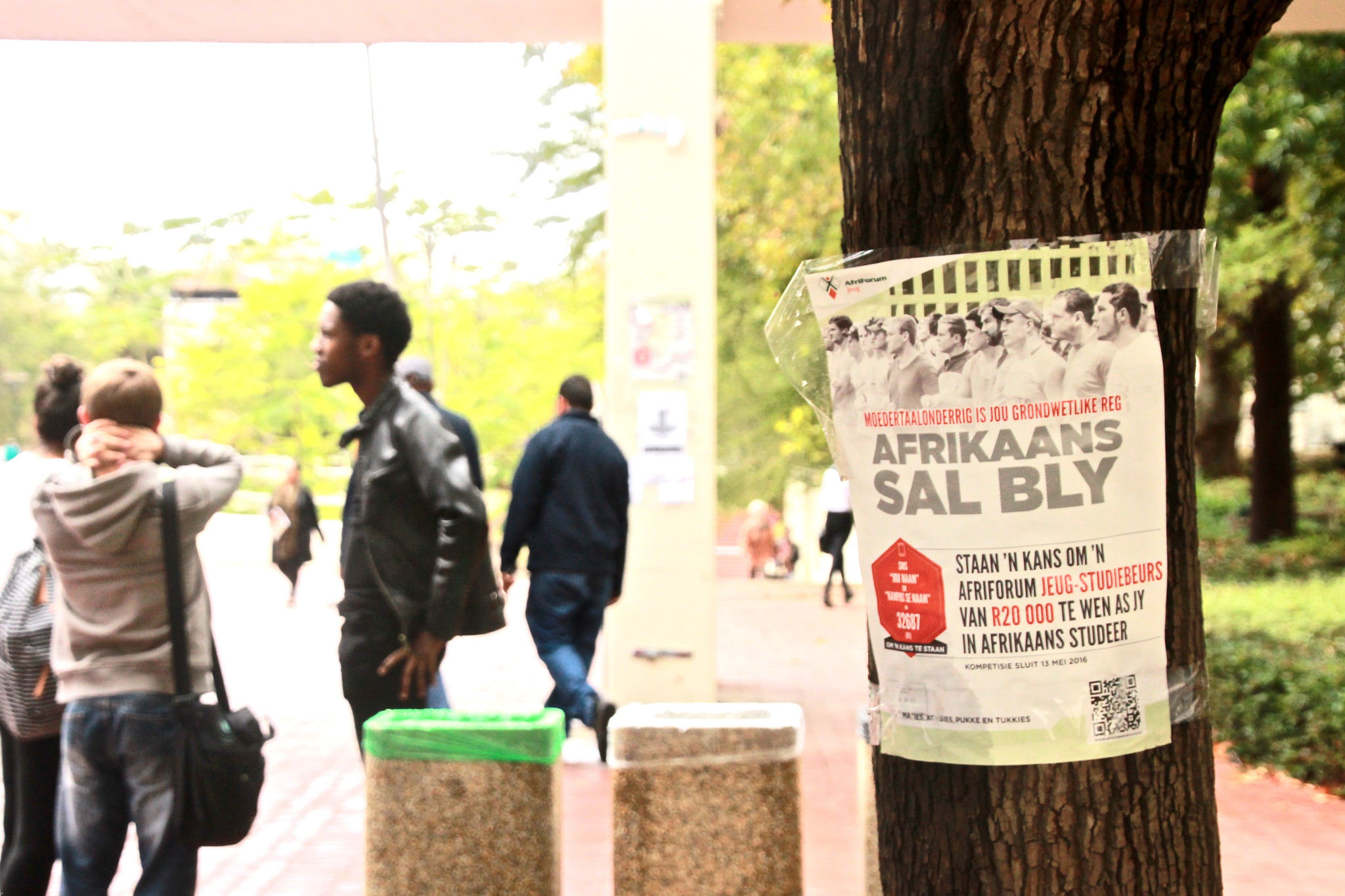 Language of the oppressor
Language of the oppressor
Stellenbosch, close to Cape Town, has traditionally been a white stronghold in South Africa. During Apartheid, the university was “for whites only”. The language many white South Africans speak is Afrikaans, which arrived with Dutch and German colonists in the seventeenth century and has since evolved into the language it is today. Now, more than twenty years after the abolition of Apartheid, the student population is becoming more colourful. This means the university is changing too: Afrikaans used to be the only official language on campus – now this is both Afrikaans and English.
This transition is not without struggle. Afrikaans holds a special place in the heart of many Afrikaners, and Stellenbosch might be the place where people are most attached to it. The Language Monument, which to Afrikaners holds as much value as Our Lady of Lourdes does for Catholics, is a thirty-minute drive away.
This is why it’s still common for people to converse in Afrikaans. René: “Many South Africans speak to us in Afrikaans, but quickly switch to English when they see we’re not from here. But with some effort, we can understand it, since it’s so similar to Dutch.”
This bilingualism comes with a lot of hassle. “Lectures are sometimes taught in two languages”, says René. How does this work? “The lecturer says a sentence twice: once in English and once in Afrikaans. A real time-waster.” They’ve also seen an interpreter in the lecture hall translating the lecture live through a whisper transmitter. Not ideal either.
Apart from the practical objections, there are other reasons to protest Afrikaans on campus. “Some students still see Afrikaans as the language of the oppressor”, says Tjits. “They feel English should be the only official language at the university.” For the time being, the university is sticking with Afrikaans, although English has now become an official language as well. “The language debate here is so complex”. Tjits sighs. “Both parties have a point: if you don’t want to be taught in Afrikaans, why not go to a different university? On the other hand: South Africa has eleven official languages, but nearly everyone speaks at least some English. Why not have everything in English so no one feels left out?”
“Some students still see Afrikaans as the language of the oppressor”
The fire surrounding the language debate is further fuelled by the many protests that have swept across South African universities. The “born frees”—the generation that never experienced Apartheid—wants to shake off the burden of Apartheid for once and for all. Some students believe that getting rid of Afrikaans is part of that, as is removing symbols of white domination, such as the statue of Marais.
Black and white
The southernmost country in Africa is often described as a land of contrasts. More than twenty years after the end of Apartheid, income inequality in South Africa is still sky high—South Africa is often considered the most unequal country in the world. The poorest part of the population lives below the poverty line, while the richest part enjoys a life of luxury behind fortified walls and 24-hour security.
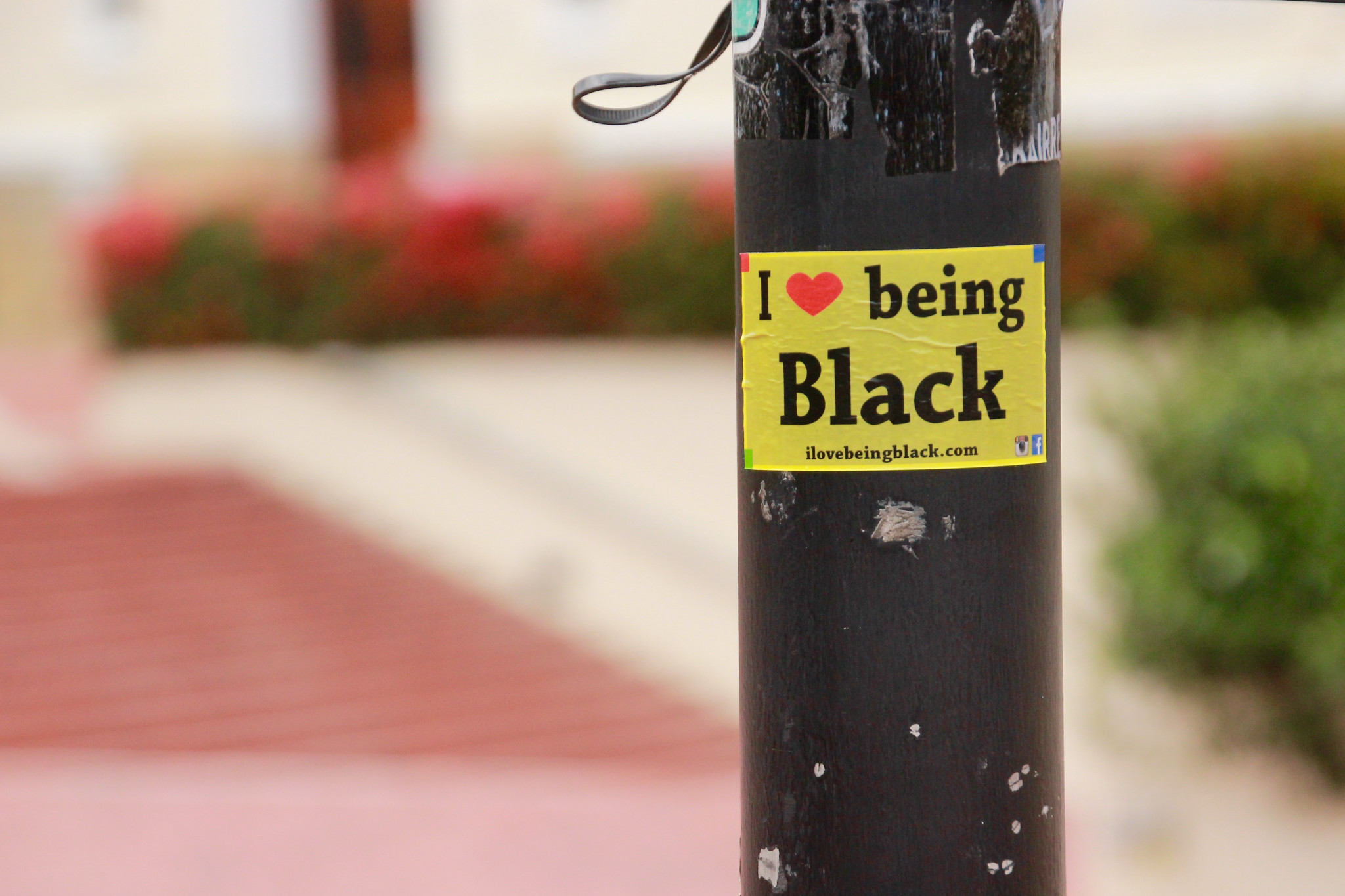 But that is just one of the things that makes the country so interesting. “We talk about race inequality in the Netherlands”, says René. He chooses his words carefully, like a true philosophy student. “But here you can feel it. Walk into any restaurant: the guests are white; the waiters are black. Except for the manager, who is white.”
But that is just one of the things that makes the country so interesting. “We talk about race inequality in the Netherlands”, says René. He chooses his words carefully, like a true philosophy student. “But here you can feel it. Walk into any restaurant: the guests are white; the waiters are black. Except for the manager, who is white.”
Skin colour and inequality is a frequent topic at the university as well, as Tjits noticed during her classes. “The history of Apartheid led to people quickly being thrown into racial categories. Here, you not only have the white and black populations, but also the “coloureds”, who form a separate group. These coloureds are of mixed decent: their ancestors came from Europe, Africa, or even Asia. Tjits: “Of course, students from different race categories now live together, but it’s still rare to see mixed race groups on campus.”
This inequality is often manifested in the curriculum. “In psychology, frequent debate arises over how we can help find solutions to societal wrongdoings.” For Tjits, this was the most important reason to study in South Africa: the lectures focus principally on the country itself. For aspiring philosopher René, this is an added bonus. “I’m always happy to take courses that don’t dwell on René Descartes or Michel Foucault for the umpteenth time, but that instead devote attention, for instance, to Ubuntu, an ethical philosophy from Africa. This truly enriches my Radboud University education.”
[kader-xl]
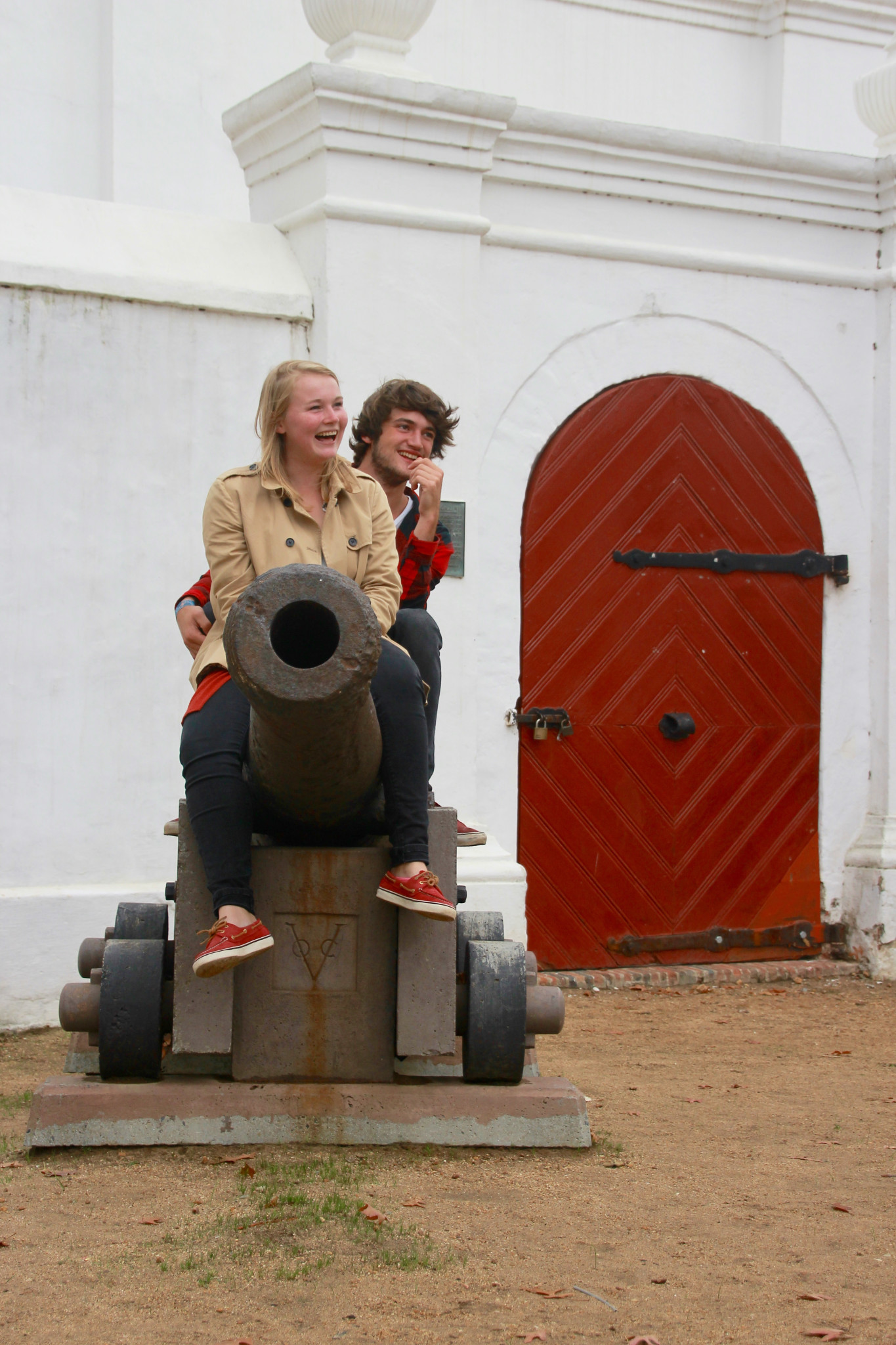 Following in the footsteps
Following in the footsteps
While cycling from their student housing to the university campus, Tjits van Lent and René van Son pass through streets with names like Kerkstraat, Dorpstraat and Pleinstraat. If you didn’t know any better, you’d think these Radboud University students had ended up somewhere in the polder. In any case, not ten thousand kilometres from home.
In this way, three-and-a-half centuries later, they are following in the footsteps of Simon van der Stel, former governor of the Dutch Cape Province and founder of Stellenbosch. It’s clear that Tjits and René aren’t the first Dutch people to spend time in Stellenbosch. The town is full of Victorian houses in Cape-Dutch style, the white Dutch Reformed Mother Church contrasting sharply with the clear blue skies. In front of an old gunpowder depository are two cannons containing the Dutch East India Company emblem. The tourist shop bears the Dutch-sounding name “Oom Samie se Winkel”.
Following the arrival of Van der Stel, Stellenbosch rapidly grew into a small town in the middle of the vineyards near Cape Town. In addition, the town is home to a university. And not just any university: Stellenbosch University holds international appeal and draws students from all corners of the earth, just as it did Tjits and René.
“Actually Stellenbosch feels more like a European town”, says Tjits. If you’re looking for “Dark Africa”, there’s not much for you here. On the other hand–Tjits points: “If you drive in that direction for fifteen minutes, you’ll end up in the townships. Yes, Stellenbosch has them too.” The townships are a product of decades of Apartheid rule and are the domain of dark South Africans. As you walk through Stellenbosch’s rich city centre, it’s hard to image that poverty is so close by. The fact that the majority of university students are white doesn’t help matters.
[/kader-xl]
